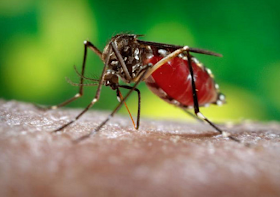- Zika virus is a virus transmitted by daytime-active mosquitoes. Zika is spread by mosquitoes, not from person to person. There is no vaccine to prevent infection or medicine to treat Zika.
- Once a person has been infected, he or she is likely to be protected from future infections.
- The name Zika comes from the Zika Forest of Uganda, where the virus was first isolated in 1947.
HOW THE DISEASE SPREADS
The
infections, known as Zika fever, often causes no or only mild symptoms.
Since the 1950s it has been known to happen within Africa and Asia. In
2014, the virus spread eastward across the Pacific Ocean to French
Polynesia, then to Easter Island and in 2015 to Mexico, Central America,
the Caribbean, and South America, where the Zika outbreak has reached
pandemic levels.
Zika
virus is related to dengue and yellow fever. The illness it causes is
similar to a mild form of dengue fever, is treated by rest, and cannot
yet be prevented by drugs or vaccines.
Symptoms of the Zika virus
- About 1 in 5 people infected with Zika virus become ill.
- The most common symptoms of Zika are fever, rash, joint pain, or red eyes. Other common symptoms include muscle pain and headache.
- The illness is usually mild with symptoms lasting for several days to a week.
- People usually don’t get sick enough to go to the hospital, and they very rarely die of Zika.
- Zika virus usually remains in the blood of an infected person for about a week but it can be found longer in some people.
- There is a link between Zika fever and microcephaly in newborn babies by mother-to-child transmission. Microcephaly is a birth defect where a baby’s head is smaller than expected when compared to babies of the same sex and age. Babies with microcephaly often have smaller brains that might not have developed properly.





No comments:
Post a Comment